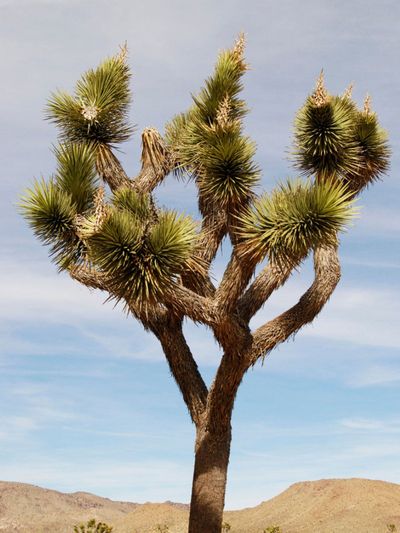Joshua Tree Information
The Joshua tree is the largest of the yuccas. It is an evergreen perennial plant that starts out as a stem-less rosette and gradually grows a thick trunk decorated by sword-like leaves. The leaves grow in clumps off a scaffold of open ranging branches. The effect is bizarre, yet picturesque, and is a hallmark of the Mojave Desert. Leaves are up to 14 inches (35.5 cm.) long, sharply tipped and bluish green. The plants may live for 100 years and grow 40 feet (12 m.) tall. In the home landscape they are more likely to top out at 8 feet (2.5 m.). Joshua tree care is simple, provided they are installed in appropriate climates, soil and light situations.
How to Grow a Joshua Tree
Joshua trees require full sun and gritty, even sandy, soil. The plants are available at nurseries and some garden centers but you can also grow them from seeds. Seeds need a chilling period of at least 3 months. Soak them after chilling and sow them in 2-inch (5 cm.) pots filled with moistened sand. Place pots where temperatures are at least 70 F. (21 C.). The plants also produce offsets, an important bit of Joshua tree information, which can be divided away from the parent plant. Caring for Joshua tree babies is similar to regular yucca care.
Joshua Tree Growing Tips
Baby plants require more water as they establish roots than their mature counterparts. Water the new plants weekly as part of good Joshua tree care. Mature trees only need water in periods of high heat and drought. Allow the soil to dry out between irrigation periods. Do not give supplemental water in winter. Older plants will flower in March to May, and spent flower stems need to be removed. Plant the Joshua tree in full sun, in sandy or rocky soil, where drainage is excellent. Soil pH may be acidic or slightly alkaline. You can also grow the yucca in a pot for a couple of years. The plant averages 12 inches (30.5 cm.) of growth per year, so eventually you will need to install it in the ground. Watch the leaves for signs of fungal disease and apply fungicide as needed. Weevils, thrips, scab and mealybugs will all cause chewing and sucking damage to the leaves. Use a horticultural soap to combat these pests when caring for Joshua trees.
